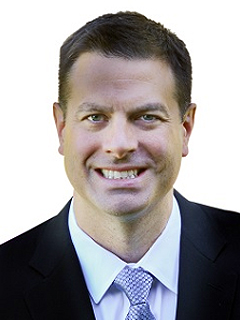Simplify your workforce structure
Eliminate spans and layers to unleash agility and efficiency.

It’s easy to be thrown off by an unbalanced organizational structure. Too many layers within an organization can lead to overburdened staff, inefficient processes, and a top-heavy management hierarchy, not to mention added expenses and bureaucratic bloat.
To address this strain, leading organizations are using spans (the number of individuals reporting directly to a manager) and layers (levels of management throughout an organization) analyses to flatten hierarchies, decentralize authority, and focus upon agile and leaner ways of working. Here we introduce best practices for enacting this process as organizations guide their workforces into the future.
Deconstruct redundant spans and layers with GenAI
Traditionally, work has been viewed through a lens of overhead. Optimal spans and layers are influenced by a managers’ ability to direct their teams, delegate the technical skills necessary for their direct reports’ roles, and perform general management administrative tasks. With these inputs, the spans -- or reach -- of leaders can narrow and layers can balloon, creating inefficiencies. By contrast, redundant spans and layers can be eliminated by introducing automation tools such as GenAI to optimize the workforce and institute new ways of working. Further, automation tools can streamline workflows, lessen the burden on teams and managers, and unlock the opportunity for larger spans and fewer layers. This freedom from redundant work, paired with a mindset shift in how leaders and teams work together, can creates a permeable and fast-moving work group, unburdened from mundane work to focus on more critical tasks.
Expand your view to other automation tools
While GenAI is at the forefront of most organizations’ optimization agendas, there is a wide range of automation tools that can be used to streamline spans and layers. In the hybrid world of work, virtual collaboration and communication tools that enable the agile exchange of information, foster faster decision-making, and a multi-modal method of problem-solving. Similarly, workflow automation software has vastly improved in recent years, reducing the need for employees to handle repetitive and manual tasks. Finally, machine learning and business intelligence tools enable organizations to make data-driven decisions without extensive human effort and the involvement of multiple decision makers.

GenAI-powered organizations
Your organization is bogged down by relying on a top-down approach, in which individual contributors are virtually frozen unless assigned tasks by their manager. While these individuals are waiting around, managers are overwhelmingly tasked with coordinating and supervising, taking weeks to give final approval on completed work. Consequently, management lacks the ability and time to supervise more than a few team members, resulting in narrow spans across the board.
Looking for solutions, your organization implements Microsoft Copilot for Microsoft 365, creating the opportunity to streamline redundancies and optimize workflow. Copilot for Microsoft 365 streamlines the administrative burden across the team by conducting research; preparing reports; automating billing, scheduling, and data updates; and creating regular reports. As a result, team members are freed up to focus on more complex activities, and managers spend less time conducting detailed reviews. With Copilot for Microsoft 365, guidelines and protocols can be standardized across the organization, streamlining decision-making processes, augmenting previously hard to automate tasks, and reducing ambiguity in work. Team members feel more autonomous, with the ability to quickly align on tasks, collaborate across departments, and assess progress in a data-driven manner, without waiting for management to direct them.
By leveraging the automation possibilities of Copilot for Microsoft 365, your organization now has a newly optimized way of working, providing managers the time and space to increase their direct reports, thus broadening spans and reducing layers of the organization, and creating a faster and more agile workforce.
Create an organizational paradigm shift
Automation and technology tools cannot serve as solutions on their own. Instead, organizations must consider the paradigm shifts in human behavior that must be created across the workforce to ensure successful adoption of the new organizational models these tools generate. Keep the following considerations in mind:
Instead of focusing on highly structured, top-down direction, managers should adopt a coaching and mentorship model to guide and support their direct reports, unlocking their potential to grow and thrive in their work.
Fostering a sense of autonomy in teams creates more evenly distributed decision-making authority across layers, unlocking more creative and innovative solutions.
Enabling teams to work cross-functionally across departments, teams, or offices eliminates the need for additional layers of hierarchy, and creates a faster, more collaborative working group that can target specific issues in the organization.
With this combined approach of utilizing GenAI and other automation tools and implementing a paradigm shift within the organization, decision-making transfers from managers to the team, the need for more managers decreases, and the hierarchy is further broken down, thus narrowing the reach from senior leaders to their front-line employees. These advancements create and reinforce the empowered workforce of the future by placing less importance on title or placement within a specific organizational structure. Instead, organizations tear down unnecessary boundaries, maintain the ones that best serve the organization, and, in the process, become more attractive to potential hires.
Where to begin

Reducing spans and layers takes more than deconstructing an organization chart. The shifts detailed above must be strategically and thoughtfully implemented for sustainable efficiencies. Aligning these steps with an overall organizational strategy will take companies far yet must be coupled with a planned approach to cultural change. Employee upskilling and support is needed to harness the full value of tools, allowing individuals to adjust to a deconstructed hierarchy, and allowing the greater workforce to adapt to new ways of working.
Organizations preparing to adopt this model should consider their readiness to transform and current level of maturity when it comes to transitioning to new ways of working. This process takes more than checking a box or placing new tools in the hands of your people. Instead, consider your teams’ capacity, and prioritization of efficient structures -- from centralized functions to low-cost locations, as well as pre-existing automation tools. Assess the readiness of managers and leaders ability to lead and manage people in a new way. Through an empowered talent base paired with clear and aligned solutions, the path to a cleaner and leaner organizational structure will be clear.
Explore more
Popular category topics
How KPMG Human Capital Advisory Services can help
KPMG Human Capital Advisory Services can provide your organization with innovative, multi-faceted people solutions and insights and drive accelerated, sustainable business performance. Harness our expertise with enterprise organization transformation, innovative talent strategies, HR, payroll, learning function optimization and implementation of all enabling technologies to develop a future-ready workforce that fuels growth and success for your organization. Embrace the future with KPMG Human Capital Advisory and experience a more innovative approach to building an agile, future-ready organization.
Subscribe to Human Capital Real Insights: Delivering in today's world of work
Subscribe to Human Capital Real Insights for access to research, analysis, and events to help you gain strategic insight and position your enterprise for a competitive advantage.
Meet our team
KPMG Human Capital Advisory Services provides innovative, multi-faceted people solutions to help organizations navigate the challenges they face today. Work with us to ensure your workforce is future ready.



